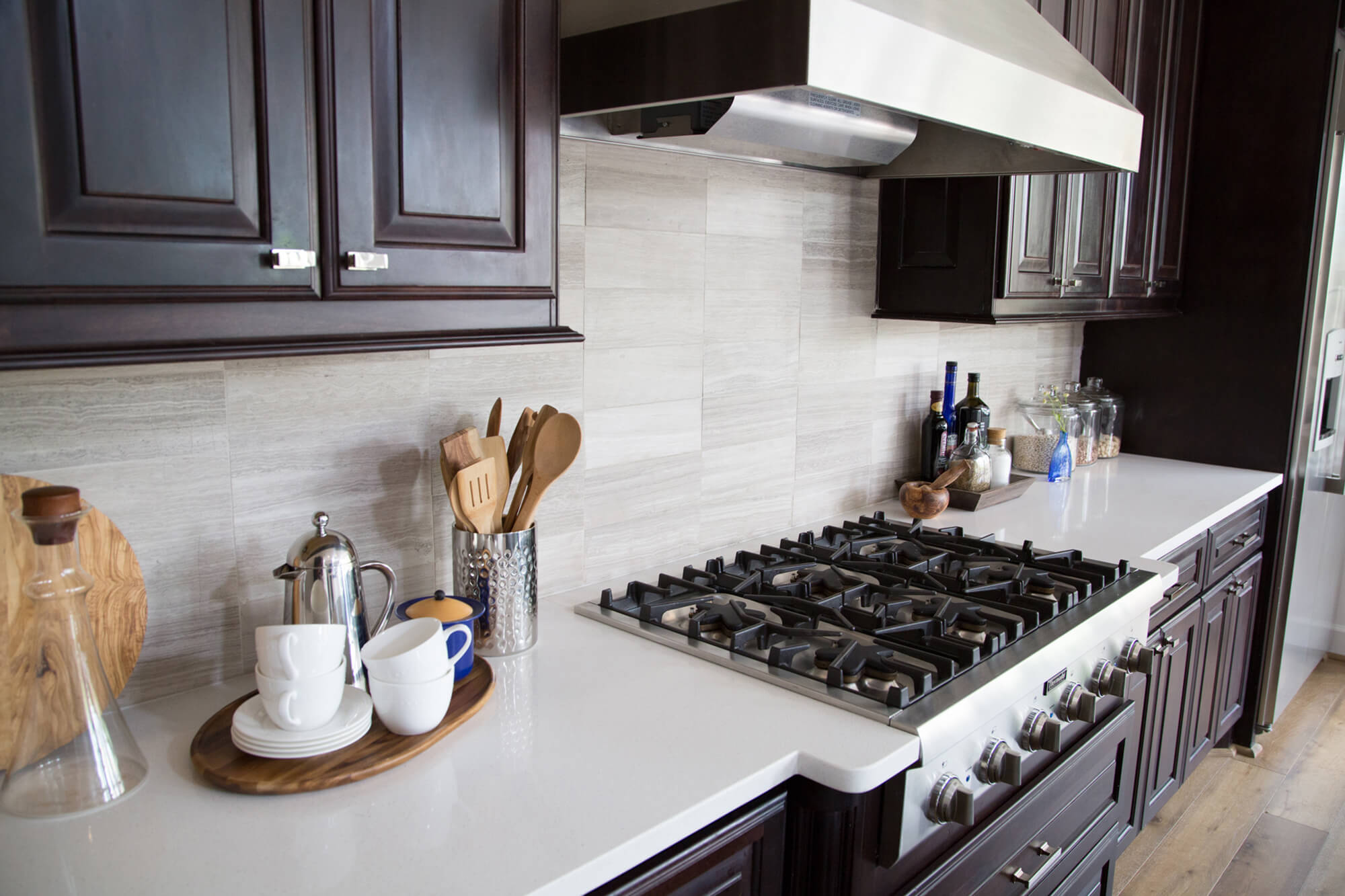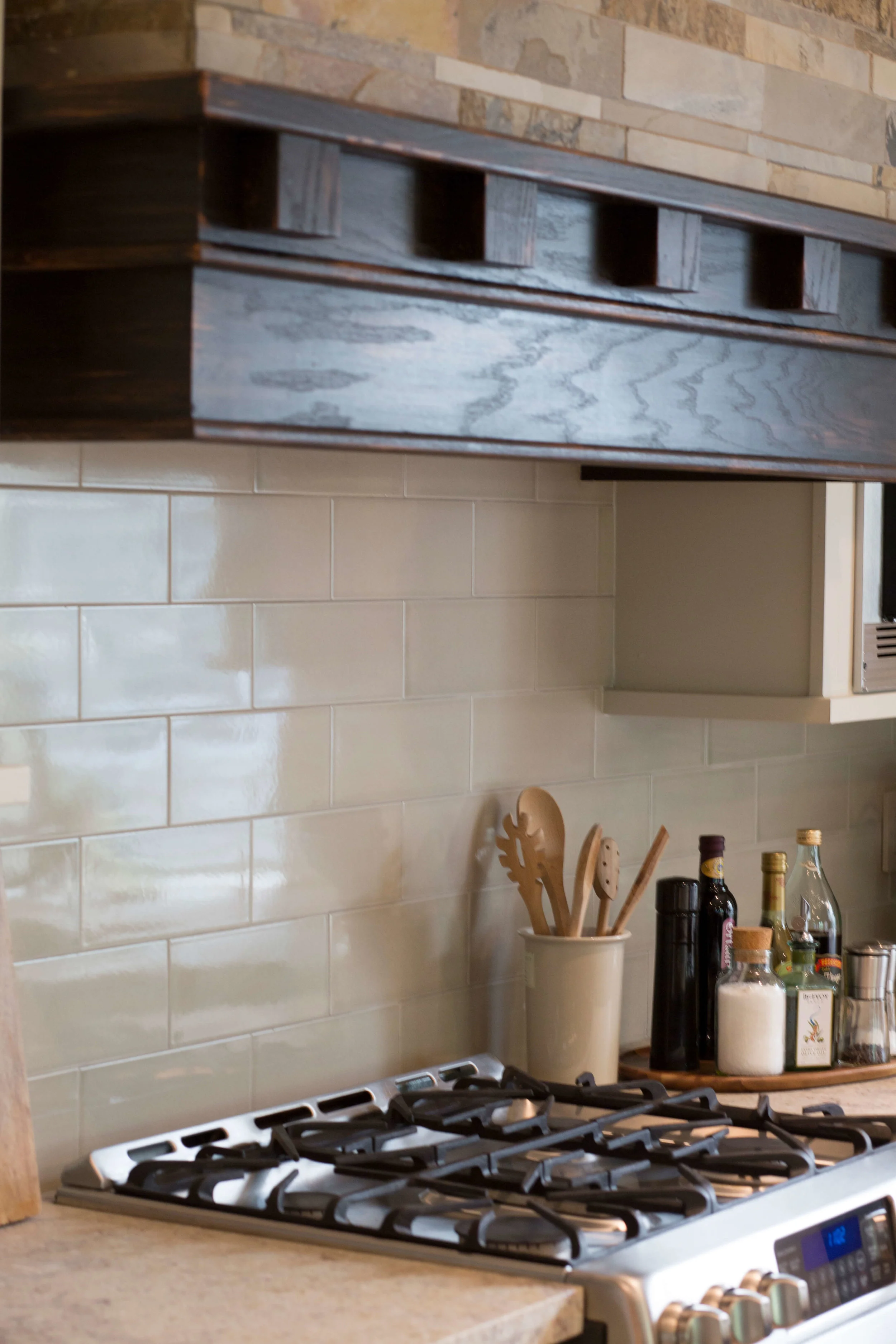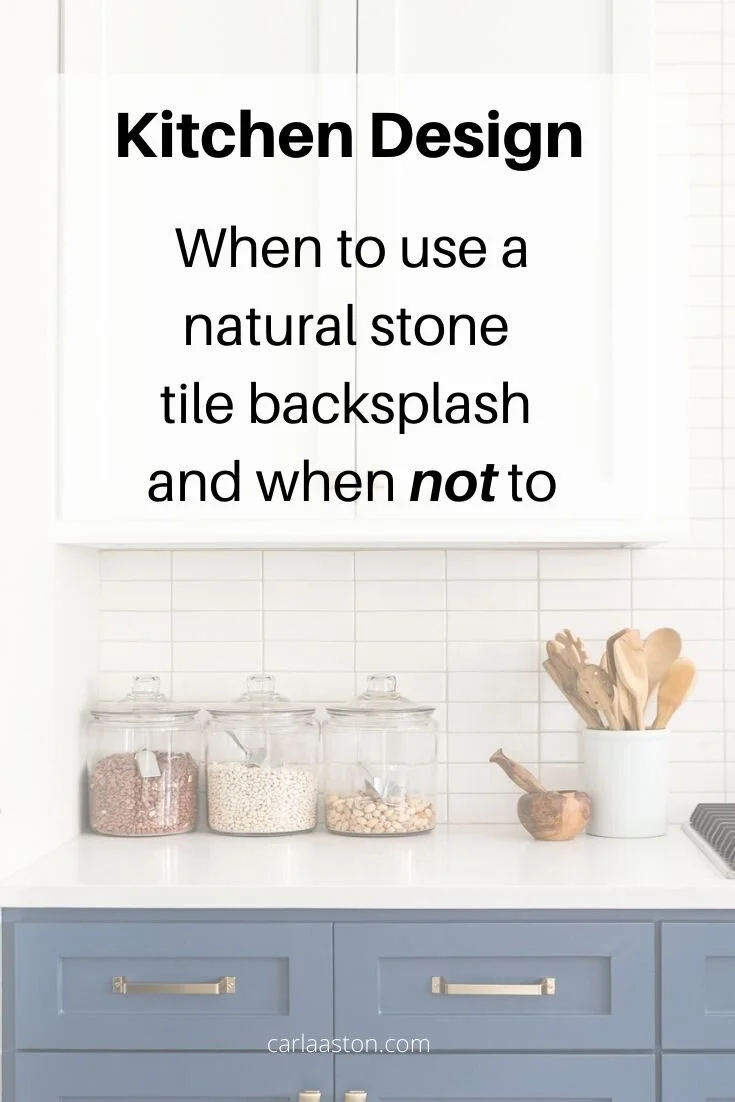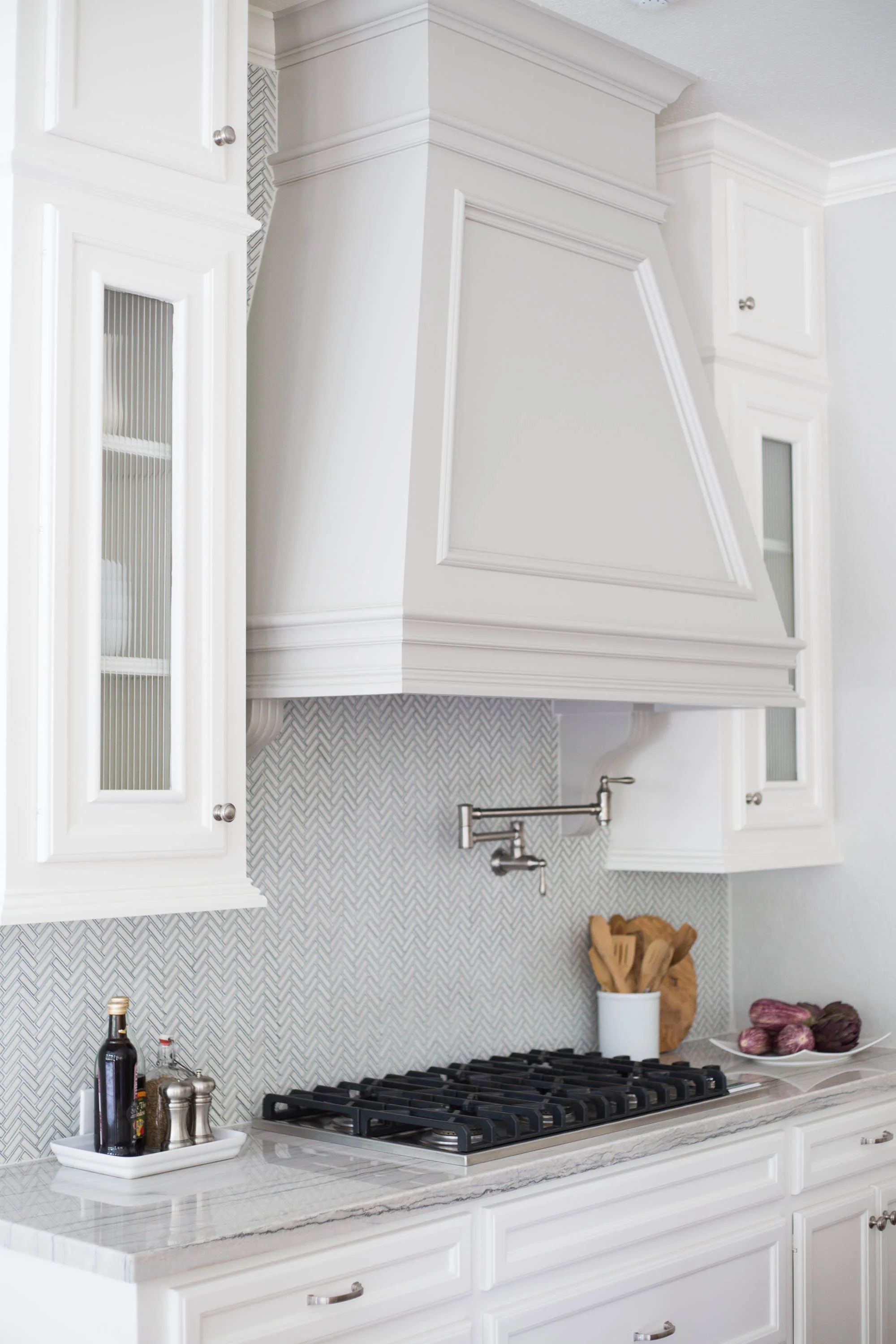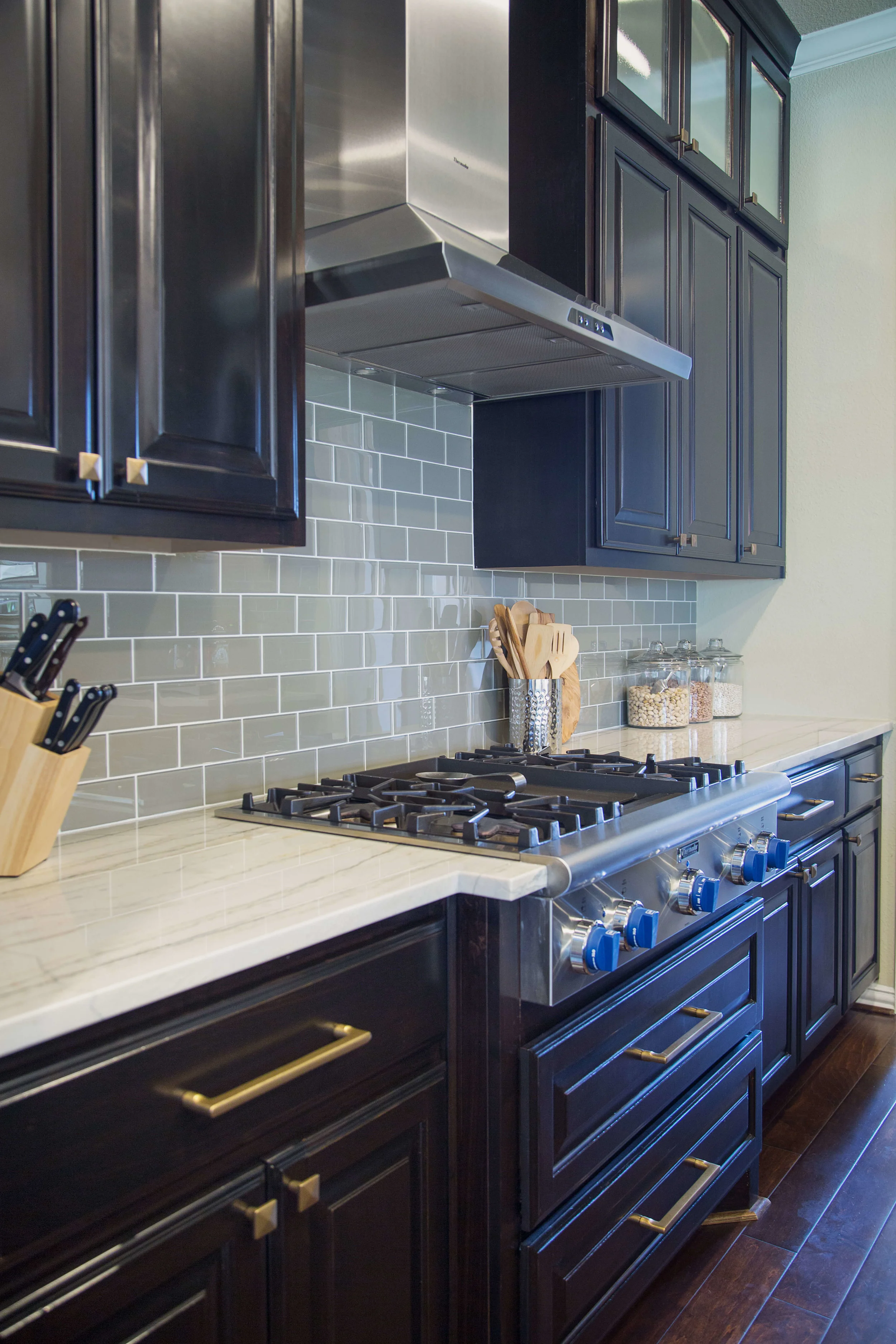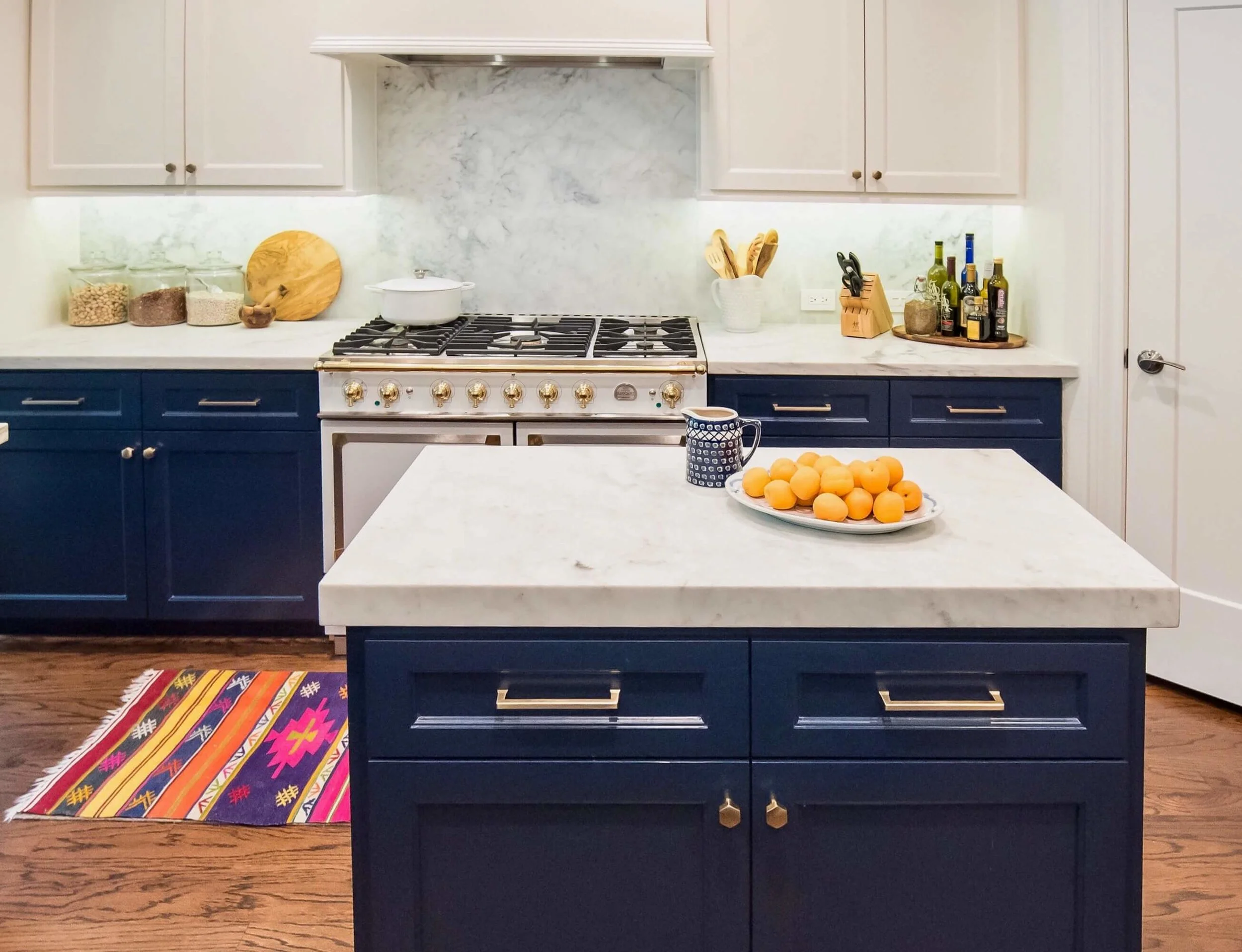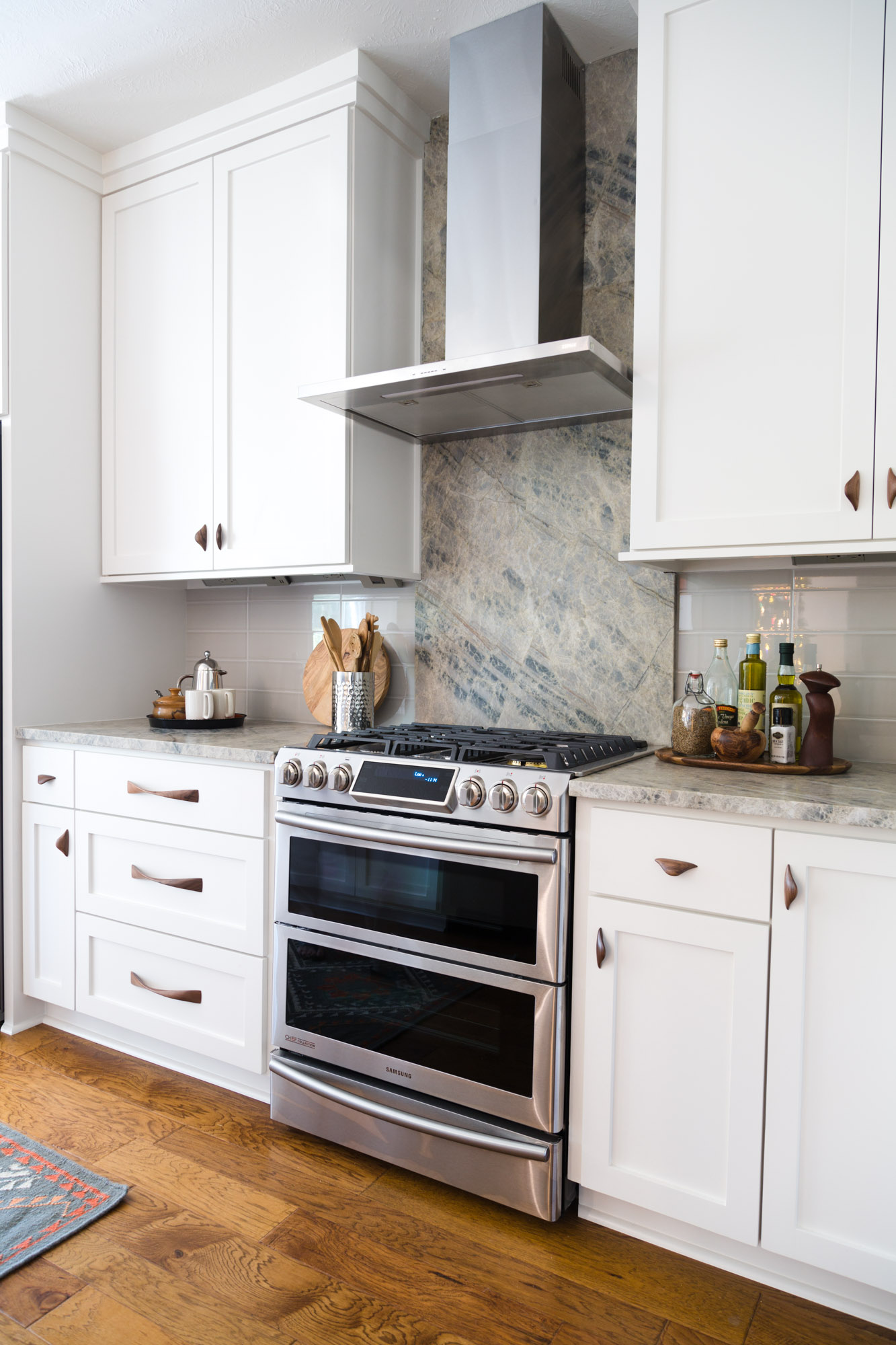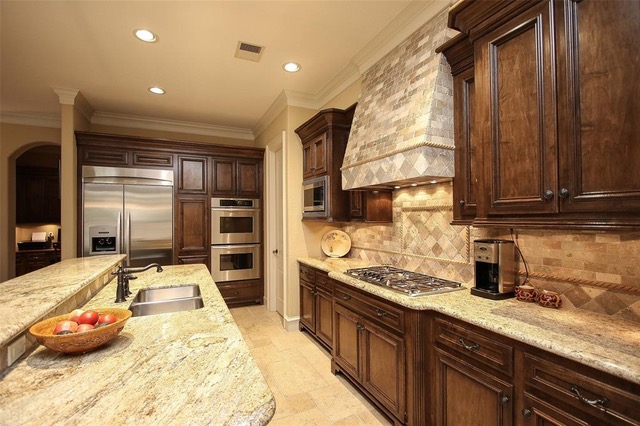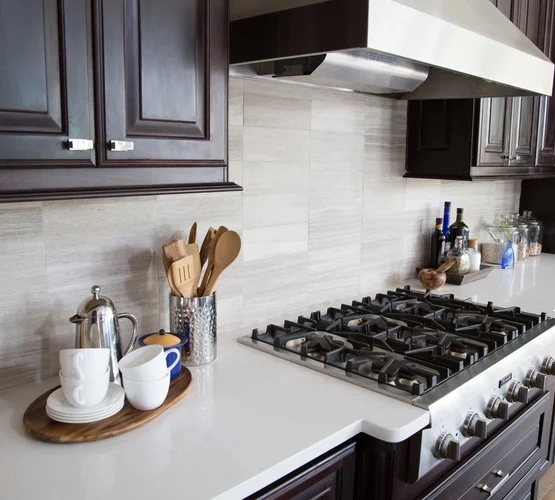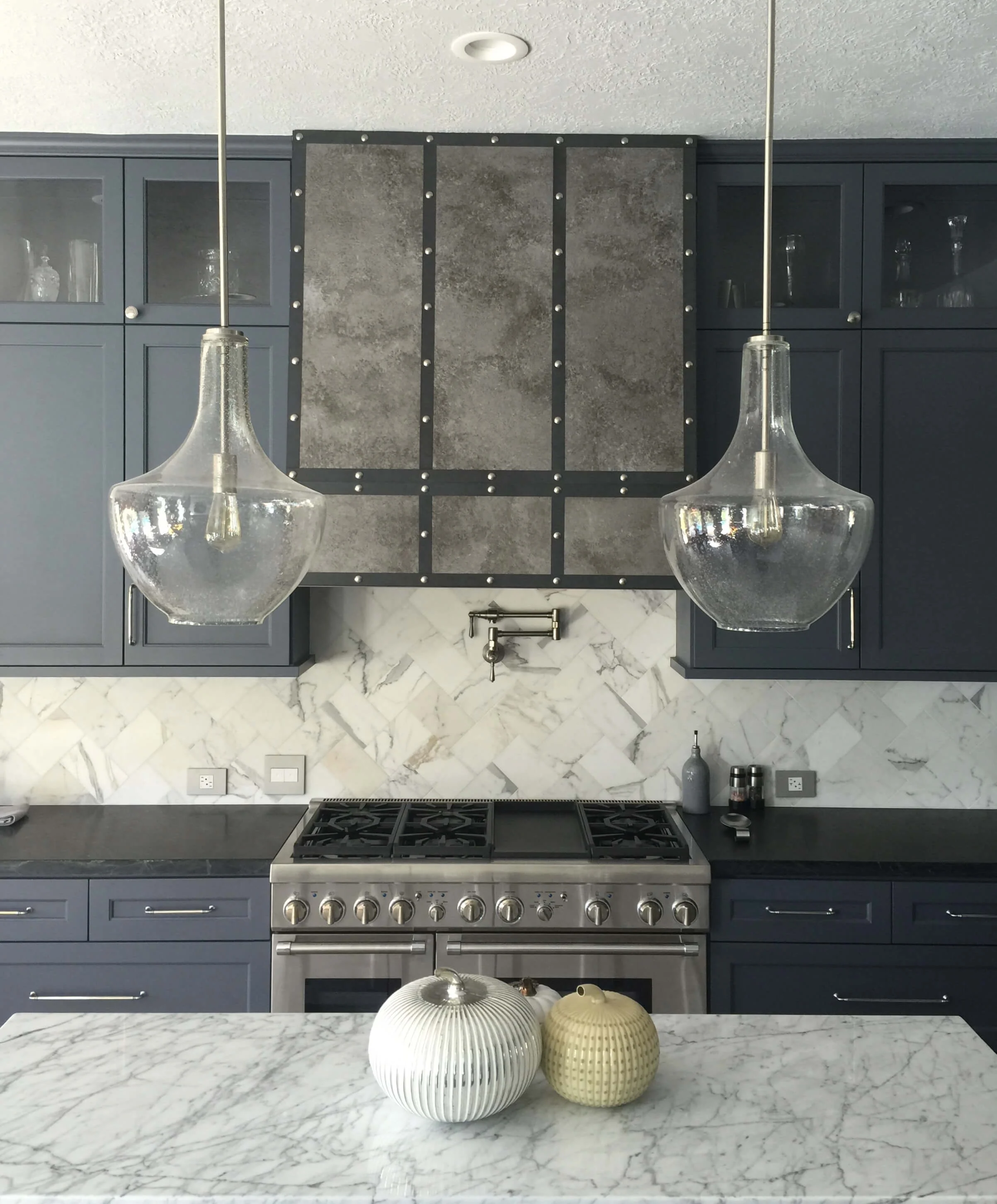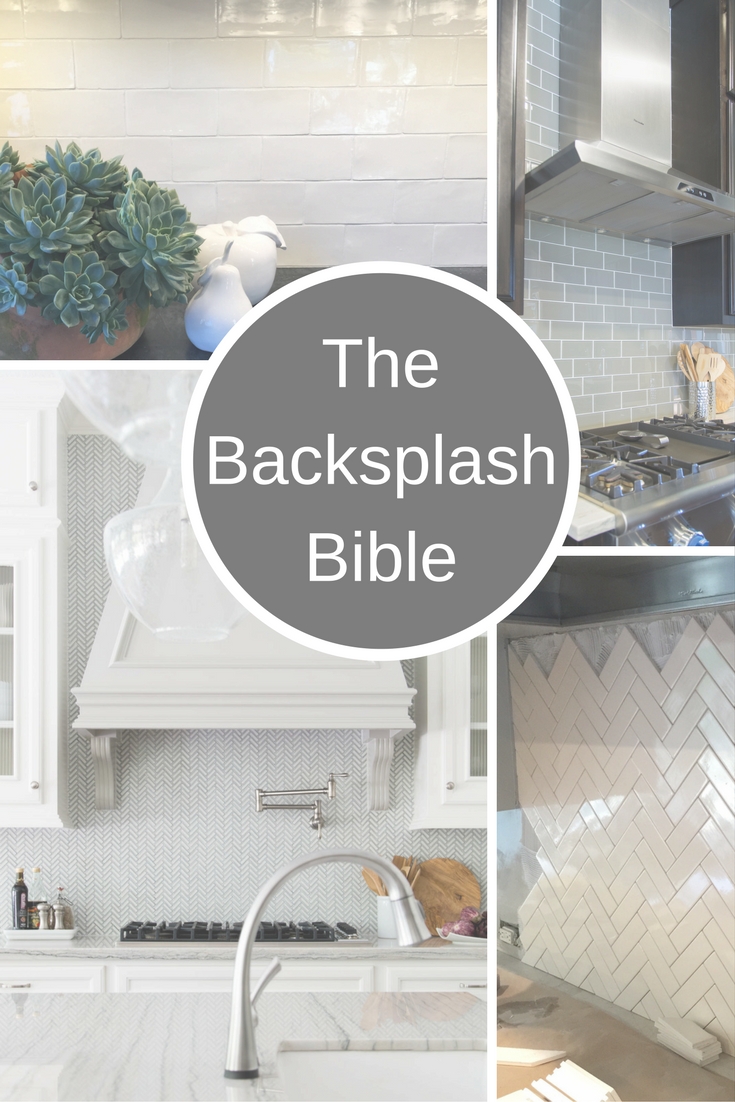I recently received a question from a blog reader asking about what natural stone tile she should use on her kitchen backsplash. She had a natural stone countertop selected and just wanted a tip on what she should look for.
Hmmm.......
I've been working in remodeling design for years and I can tell you one thing for sure.
Pairing two different natural stones together in a countertop and backsplash combination can create an expensive hot mess!
Let's go back a few years.
Around 10 or so, to be exact.
Natural Stone Backsplash Mistake Avoided
I worked on this kitchen remodel with some lovely clients. Back then, people were just starting to use honed granite, which I happened to love. (I was before the trend.:-)
The main choices we had for honed granite was black and well.......black.
However, I was in love with matte finishes and I knew the matte finish in this kitchen would slightly dull the spotty pattern of this Kashmir White granite countertop. It would give a more rustic appearance to this kitchen, which I really wanted in the design.
I researched the heck out of honing natural stone in my local area. Back then, most fabricators wouldn't even do it in house, but I found a few.
We proceeded ahead and the stone turned out beautifully and most appropriate for the design of this kitchen.
HOWEVER,
.......it turned this particular natural stone slightly cooler toned, overall, in the process.
The backsplash tile we had selected was a very plain off-white limestone brick shape. It had no movement, just a nice matte, simple appearance, which was exactly what I wanted to contrast with the movement on the countertop.
The limestone had a warmth to it. A warmth that became more pronounced paired with the coolness of the freshly honed granite (that I couldn't see prior to the installation since it hadn't been honed yet).
Once that limestone backsplash started going up, we knew it wasn't going to work. It was looking just "off".
That job cost me money so, well, I won't ever forget that lesson. :-)
I replaced their tile with this beautiful large scaled subway tile. A tile where we were guaranteed a color and undertone in the finish of the tile.
Any natural stone product has variation and some unpredictable color tones.
Selecting a Natural Stone Backsplash
Here's the deal....
When you are selecting natural stone slabs, you are selecting them in a warehouse or (heaven forbid) outdoors. The lighting is questionable at best and definitely NOT what you will have in your home.
Even IF you take your paint colors, your tiles, etc., to the slab, it is really difficult to see the right undertones and to verify all will look great together.
You're also looking at a slab in a vertical position and unless you are using it on a wall, that POSITIONING can even affect the overall coloration and appearance with your other samples.
Especially if you have a natural stone that tends to vary a lot, like Taj Mahal, for example, which I use often. It can look warm toned on one job and gray on another, depending on the part of the mountain it is coming from and the stock available.
Any natural stone product has variation and some unpredictable color tones.
Whether it is slab material or tile, natural stone has variation. You could have 3 samples of the same natural stone tile and all 3 might look alike, until you get a box or a lot of the tile. The box just likely will have some tiles in a different color tone.
That is part of the beauty of natural stone.
That's why pairing together two different materials that have variation and changes in undertone can be risky. Especially if you are comparing them in a poor lighting situation.
So, when this reader asked about pairing a natural stone tile with a natural stone counter, I said DON'T.
Variation And Movement of Natural Stone Also Affects Backsplash Choice
It's not ONLY that the undertones in natural stone products can be difficult to see, especially in a compromised lighting situation like a stone slab warehouse, but it has to do with the movement and variation.
I'm a firm believer that you should pick one of the two to have strong variation and movement when selecting countertops and backsplashes. Either the countertop has it or the backsplash. It just makes for a pleasing combination design-wise.
Check out this kitchen remodel project below.
We chose a Macabus White quartzite that had a subtle strie or linear pattern to the veining and then a more textural look for the mosaic ceramic tile backsplash. Both have distinct patterns that compliment the other even though the overall coloration is the same.
(I was sure of the color direction of the tile, because it was ceramic, a manufactured item that was going to come in exactly the way it appeared in the sample. No fear there.)
In this kitchen remodel, below, I also did Macabus White quartzite.
Here I used a gray glass tile, a solid color, and one that is somewhat darker than the countertop for some contrast.
I can't really imagine I would ever put a natural stone tile with movement and veining with a natural stone countertop like this. For example, I would never do a Carrara marble tile backsplash with this natural stone countertop.
Natural Stone Backsplash Guidelines
There are two exceptions here, however.
1. When your natural stone backsplash is the SAME material as the countertop.
If you're matching countertop and backsplash, then the whole element is making a statement together and that can make that natural stone more of a dramatic moment in your kitchen.
We did the same marble slab on the backsplash in this kitchen remodel that we did on the countertop.
Here's a different take on the idea, but same concept of pairing something busy and patterned with something solid.
In this kitchen remodel below, the backsplash at the range was done in the same material as the countertop. The adjacent backsplash, however, is a plain and simple large subway, installed in a stacked pattern. We wanted the natural stone to shine here.
I would have never specified a natural stone tile to coordinate with this.
2. When there is a strong contrast between the natural stone on the countertop and backsplash.
For example, if you are using a predominantly dark stone countertop and a very light natural stone tile, then that can be successful.
That's why, when this Designed in a Click consultation came my way and the homeowner wanted to paint her cabinets light, keep her natural stone backsplash and change the countertop, I recommended she go with a solid looking quartz or stone since there was lots of variation in that backsplash.
"Before" remodel - Designed in a Click Consultation
Basically, that kitchen now, with the granite countertop and splash as is, all blends together visually. The contrast is between the cabinets and the counters / backsplash, which are seen as one element.
So, when CAN you use a natural stone tile backsplash successfully?
When you have a more solid look countertop or create high contrast.
Here is a beautiful vein-cut limestone tile that I used in a job with white quartz counters. The contrast of no-pattern counters with the movement and variation of the natural stone tile makes for a great combination.
Here is another job, below, where we used a dominate dark gray soapstone as the counter at the perimeter cabinets and white marble tile as the splash. That high contrast between the countertop and backsplash, makes this a pleasing combination.
Natural stone kitchen backsplash and countertop, soapstone and white Carrara marble | Designer: Carla Aston #marblebacksplash #soapstone
There is rather a lot to consider, as you can see.
So, here's a bit of recap.
If I am using a natural stone product on a project (and I do love quartz these days), I typically like to use it on either the countertop or the backsplash.
The exceptions are....
If I'm doing all the same material on both
If there is high contrast between the two
The main reason is because of the tendency of natural stone to have unpredictable variation in color, undertone, and pattern. I like to have at least one of the two be something I know I can count on looking like the sample. :-)
Want more help on backsplash selection and design?
Check out my helpful eBook guide, The Backsplash Bible, that has all kinds of scenarios and info linked within.
Click on the image for more info.

